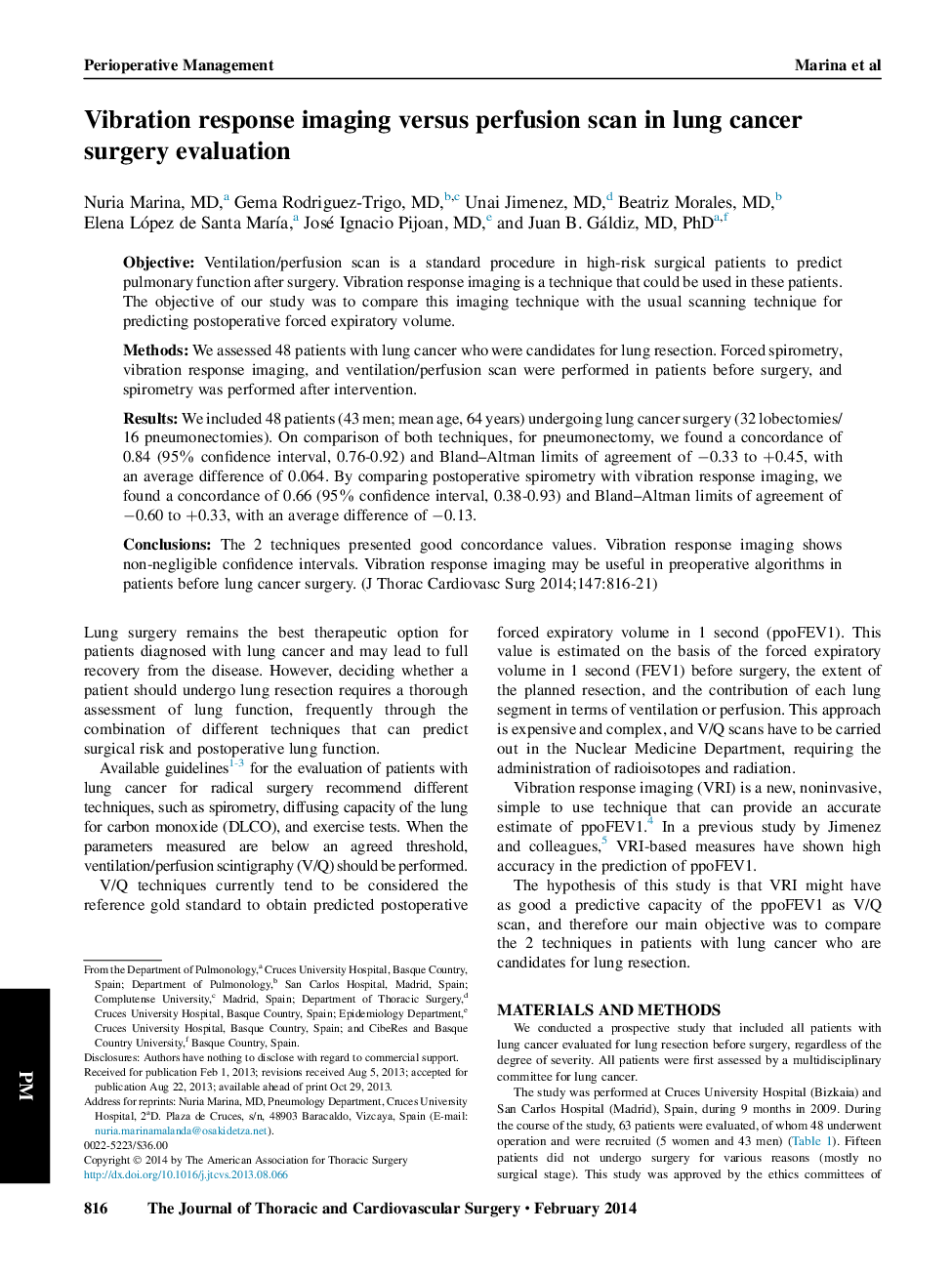| Article ID | Journal | Published Year | Pages | File Type |
|---|---|---|---|---|
| 2980248 | The Journal of Thoracic and Cardiovascular Surgery | 2014 | 6 Pages |
ObjectiveVentilation/perfusion scan is a standard procedure in high-risk surgical patients to predict pulmonary function after surgery. Vibration response imaging is a technique that could be used in these patients. The objective of our study was to compare this imaging technique with the usual scanning technique for predicting postoperative forced expiratory volume.MethodsWe assessed 48 patients with lung cancer who were candidates for lung resection. Forced spirometry, vibration response imaging, and ventilation/perfusion scan were performed in patients before surgery, and spirometry was performed after intervention.ResultsWe included 48 patients (43 men; mean age, 64 years) undergoing lung cancer surgery (32 lobectomies/16 pneumonectomies). On comparison of both techniques, for pneumonectomy, we found a concordance of 0.84 (95% confidence interval, 0.76-0.92) and Bland–Altman limits of agreement of −0.33 to +0.45, with an average difference of 0.064. By comparing postoperative spirometry with vibration response imaging, we found a concordance of 0.66 (95% confidence interval, 0.38-0.93) and Bland–Altman limits of agreement of −0.60 to +0.33, with an average difference of −0.13.ConclusionsThe 2 techniques presented good concordance values. Vibration response imaging shows non-negligible confidence intervals. Vibration response imaging may be useful in preoperative algorithms in patients before lung cancer surgery.
